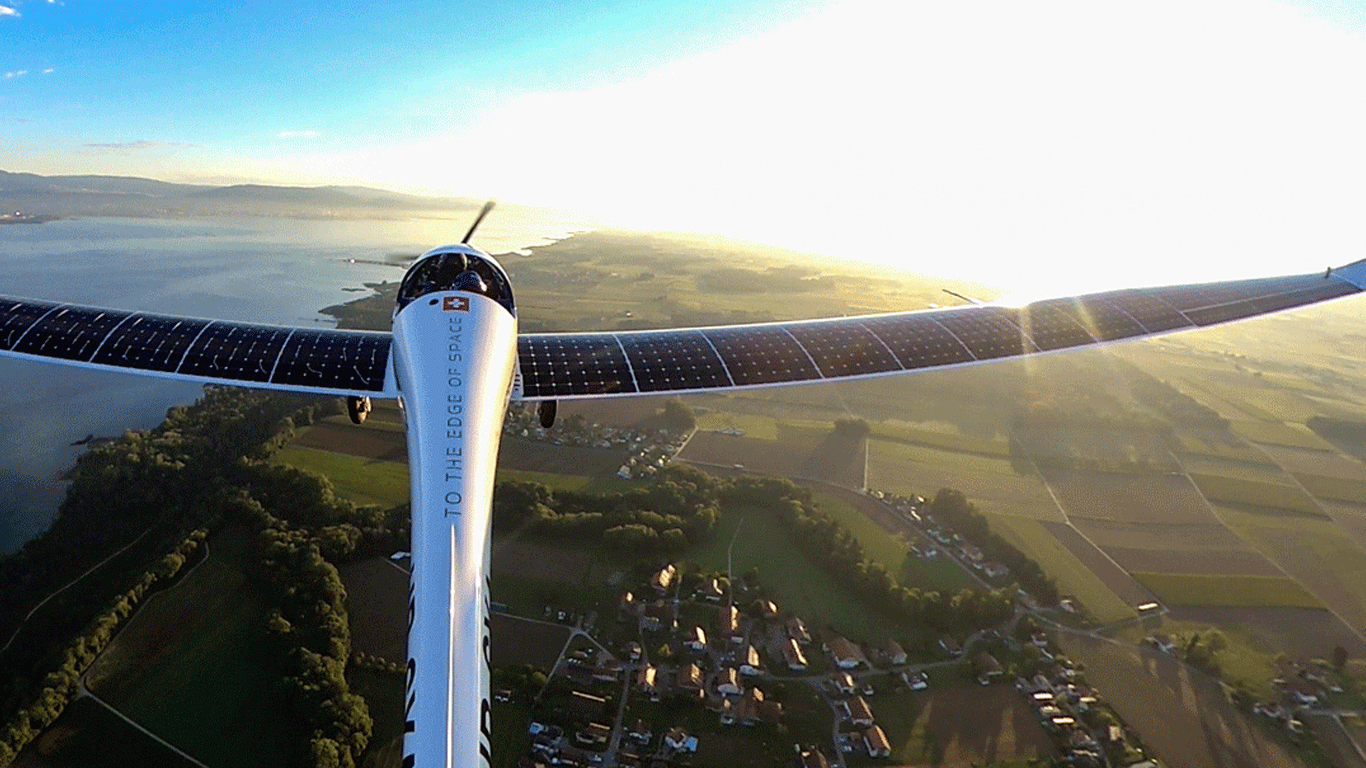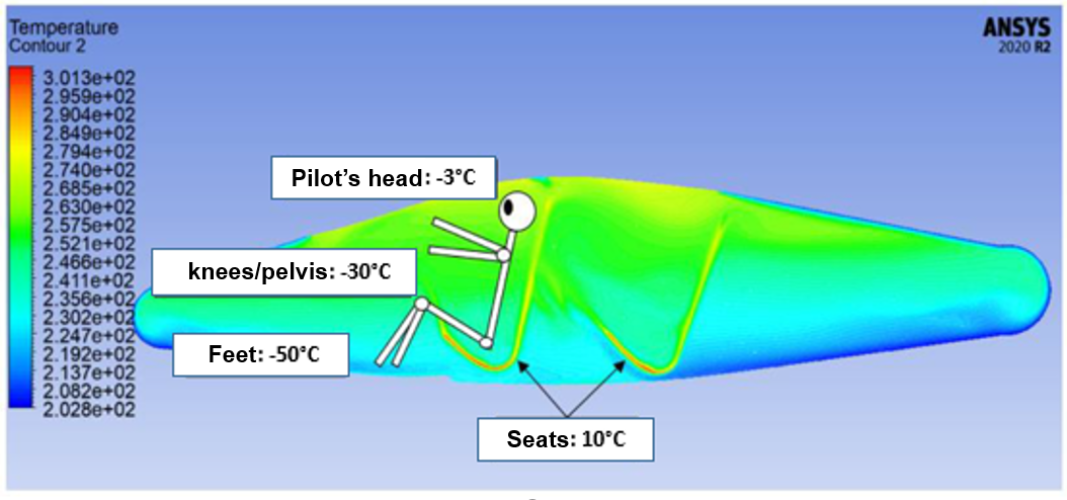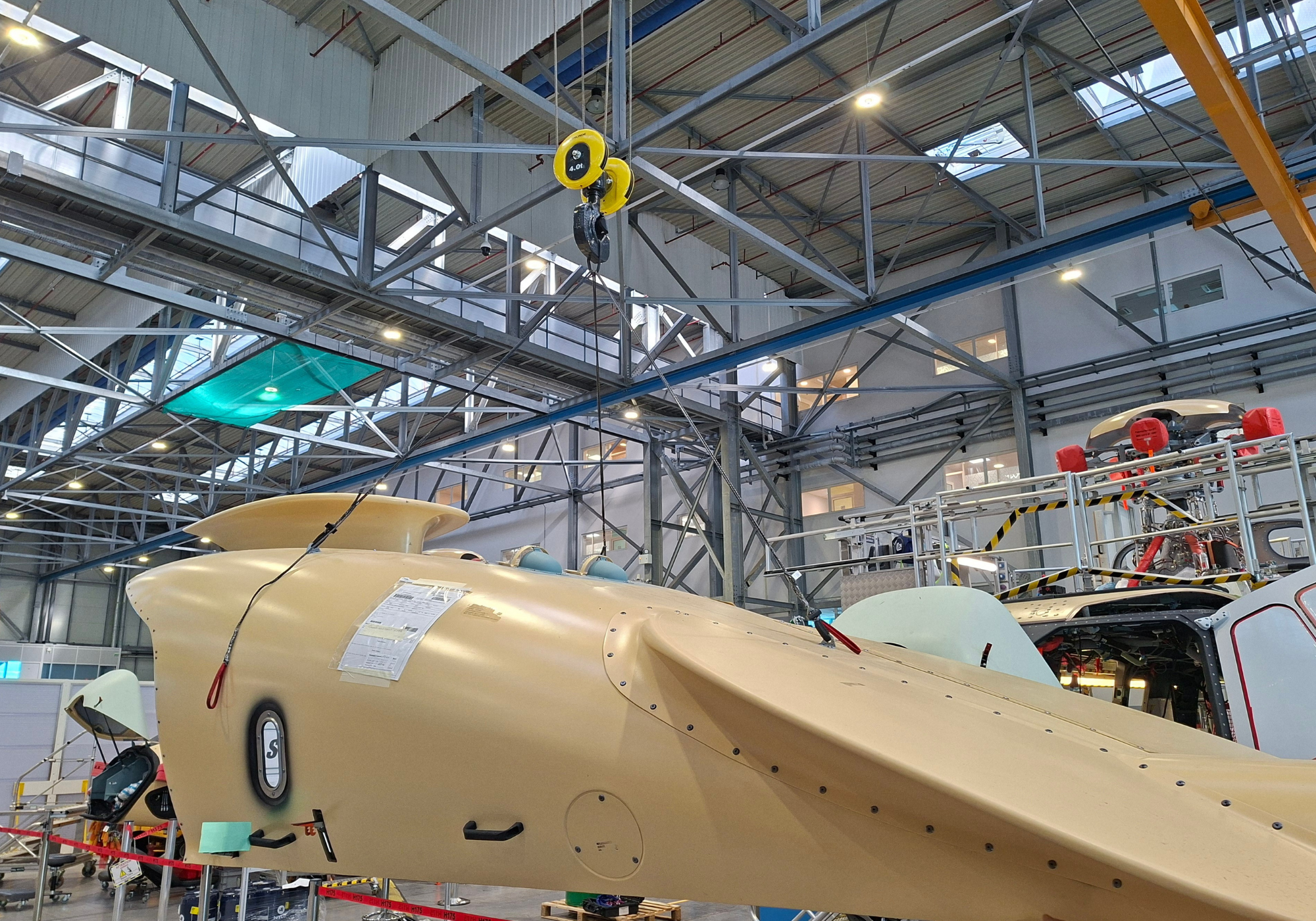The research carried out by SEGULA Technologies as part of the SolarStratos project has made it possible to define the physical properties of the stratosphere. This data has made it possible to obtain an order of magnitude of the possible temperatures of a stratospheric flight. The studies estimate a temperature of between -60° and 0° on average and up to -80° near the poles.
Research has focused on the thermal optimisation of the cockpit to guarantee the pilot’s safety and vital comfort. SEGULA’s collaborators working on the project have highlighted that the area most at risk is the pilot’s feet, where temperatures can reach -50°, compared to an average of -10° for the upper body. The planned spacesuit has insulating characteristics so that the pilot’s exposure is safe. However, long-term exposure could lead to permanent damage to the body.
The teams also estimated the solar flux to be 342W/m² on average. Solar radiation is particularly important in the research because it is the only source of heat for the pilot, apart from the spacesuit.
To obtain these results, the collaborators implemented a theoretical and numerical methodology. The theoretical research was based on the ISA (International Standard Atmosphere) atmospheric model, which describes variations in pressure, temperature, density and viscosity. For the numerical part, the teams used the CFD (Computational Fluid Dynamics) modelling method to obtain the coupling between the air movement and the associated heat transfers within the cockpit volume. Thus, a volume mesh was created from the 3D geometry of the aircraft to specify the temperatures around the pilot.








 FOR A BETTER EXPERIENCE
FOR A BETTER EXPERIENCE